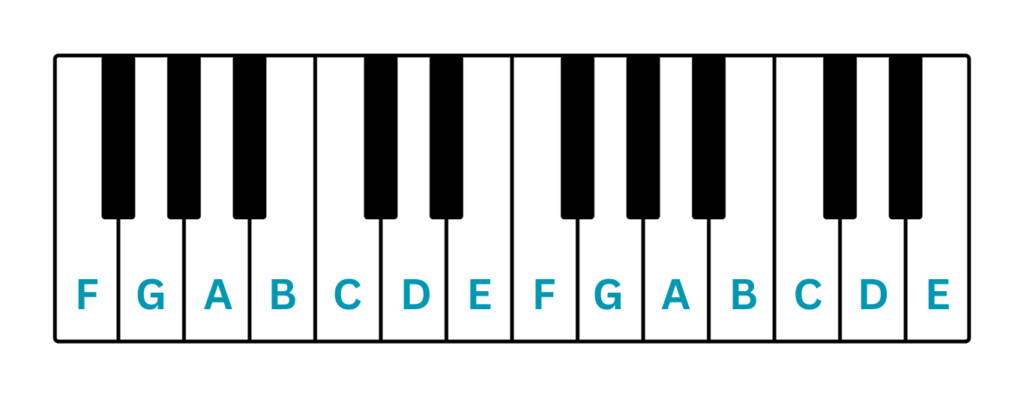
Photo: Michał Ludwiczak @ Pexels
A great song that isn’t too difficult to play. Originally released in 1987, back when NYC was a very interesting (and more dangerous) place to live.
It’s in the key of Bm, and switches to it’s Relative Major of D.
Scroll down to the bottom to understand the music theory behind the song.
Chords


Verse
Em | A | Bm | A
ivm7 | VII7 | im7 | VII7 (Key of B Minor)
iim7 | V7 | vim7 | V7 (Key of D Major)
Chorus
Em | A | Bm | A
(same as Verse)
(Note: Verse and Chorus don’t always play the last A chord, in the sheet music, when I play it I just omit it by feel, usually when there’s a lot going on with the singing or I have to make a quick chord change.)
Bridge
D | A | Bm | F# || G | A | A#dim7 | Bm
Imaj7 | V7 | vim7 | iiim7 || IVmaj7 | V7 | V#dim7 (passing chord) | vim7
(Key of D Major)
Lyrics
I don’t drink coffee I take tea my dear
I like my toast done on one side
And you can hear it in my accent when I talk
I’m an Englishman in New YorkSee me walking down Fifth Avenue
A walking cane here at my side
I take it everywhere I walk
I’m an Englishman in New YorkI’m an alien, I’m a legal alien
I’m an Englishman in New York
I’m an alien, I’m a legal alien
I’m an Englishman in New YorkIf “Manners maketh man” as someone said
Then he’s the hero of the day
It takes a man to suffer ignorance and smile
Be yourself no matter what they sayI’m an alien, I’m a legal alien
I’m an Englishman in New York
I’m an alien, I’m a legal alien
I’m an Englishman in New YorkModesty, propriety can lead to notoriety
You could end up as the only one
Gentleness, sobriety are rare in this society
At night a candle’s brighter than the sunTakes more than combat gear to make a man
Takes more than a license for a gun
Confront your enemies, avoid them when you can
A gentleman will walk but never runIf “Manners maketh man” as someone said
Then he’s the hero of the day
It takes a man to suffer ignorance and smile
Be yourself no matter what they say
Be yourself no matter what they say
Be yourself no matter what they say
Be yourself no matter what they say
Be yourself no matter what they say…I’m an alien, I’m a legal alien
I’m an Englishman in New York
I’m an alien, I’m a legal alien
I’m an Englishman in New YorkI’m an alien, I’m a legal alien
https://www.azlyrics.com/lyrics/sting/englishmaninnewyork.html
I’m an Englishman in New York
I’m an alien, I’m a legal alien
I’m an Englishman in New York
Music Theory behind “Englishman in New York” by Sting
Key is Bm, and as Sting often does, alternates to the Relative Major key in a different section (in this case, to D, in the Bridge instead of the Chorus, however).
(Note: Relative Major is 3 tones up from Relative Minor, so B –> C –> C# –> D.
B is the Minor Key, D is the Relative Major key).

At first glance I thought this song was in the key of Em, however when looking at the chords it wouldn’t fit into the keys of Em / G.
Bm is a minor key (which is the same thing as saying it’s in Aeolian). Let’s take a look what the Aeolian mode looks like:

In our case, here’s the outline of the Key of Bm:
Bm7 | C#dim | Dmaj7 | Em7 | F#m7 | Gmaj7 | A7
im7 | iidim | IIImaj7 | ivm7 | vm7 | VImaj7 | VII7
Here’s the outline of the Relative Major key (D):
Dmaj7 | Em7 | F#m7 | Gmaj7 | A7 | Bm7 | C#dim
Imaj7 | iim7 | iiim7 | IVmaj7 | V7 | vim7 | viidim
A Note on Figuring Out the Right Key
Figuring out the correct key of a song is great practice to internalize musical keys, and practice music theory.
In this case, let’s write out the chords used, and try to fit them into the pattern of a Major Key:
Imaj7 | iim7 | iiim7 | VImaj7 | V7 | vim7 | viidim
Let’s look at the Bridge, where the most chords are used. Typically a song is going to be in one key (and commonly switching between it’s Relative Major or Minor). It’s not always the case, but for most songs, this is a safe rule to follow.
Bridge: D | A | Bm | F# | G | A | A#dim7 | Bm
Alright, let’s try to write out a few keys that we can guess that the song is in, and see if the chords match. Since I only see one sharp (F#), I’m guessing it’s either in the key of G, or D (A#dim7 is a passing chord, we can ignore it, since there’s already an “A” chord used earlier).
It’s not in the key of A (3 sharps: F, C, G), because we have a G and not G#. So it’s either in the key of G (1 sharp: F) or D (2 sharps: F, C):
Imaj7 | iim7 | iiim7 | VImaj7 | V7 | vim7 | viidim
Dmaj7 | Em7 | F#m7 | Gmaj7 | A7 | Bm7 | C#dim
Gmaj7 | Am7 | Bm7 | Cmaj7 | D7 | Em7 | F#dim
As we can see above, D is a better fit. 5 chords in common, and in G, A is minor, and not major.
Interesting Note on the ii – V – i
If you look at the Verse and Chorus in terms of D Major, it’s a ii – V – vi progression.
The vi chord is a tonic chord, just like the I and the iii chords. It has a similar feeling.
The tonic chord families are Tonic (I, iii, vi), Subdominant (IV, ii) and Dominant (V, vii).
It’s interesting to see how Sting switched out the I tonic chord, for the vi which is in the same family. To keep it different than a normal ii – V – I progression, but still have a similar feeling.
Chords Deconstructed
Let’s deconstruct the chords on the guitar, and see every note.
This helps to both learn our guitar, and internalize the music theory behind each chord.
Em: E – B – E – G – B – E (1, 5, 1, 3m, 5, 1)
A: A – E – A – C# – E (1, 5, 1, 3M, 1)
Bm: B – F# – B – D – F# (1, 5, 1, 3m, 5)
D: D – A – D – F# (1, 5, 1, 3M)
